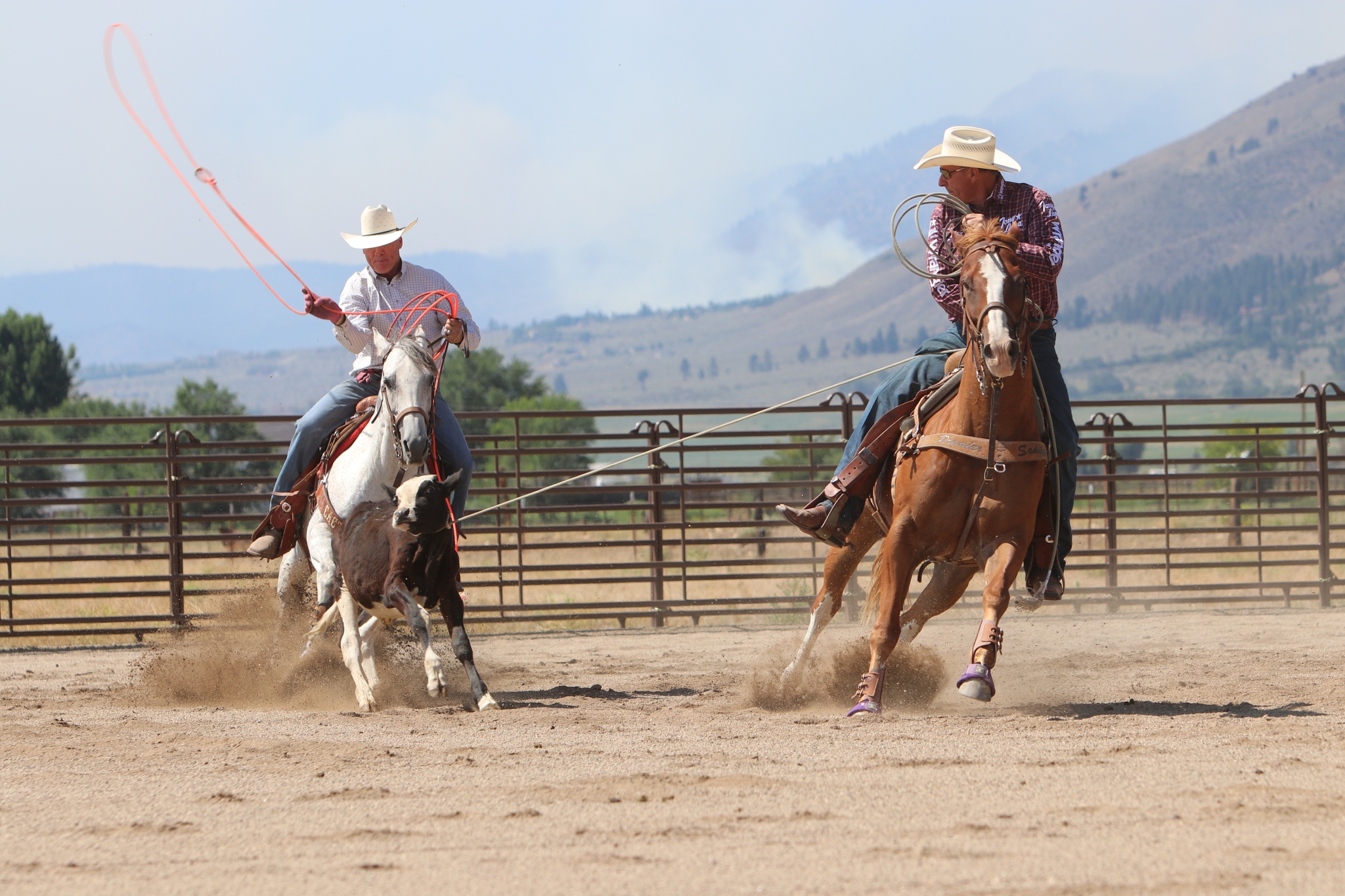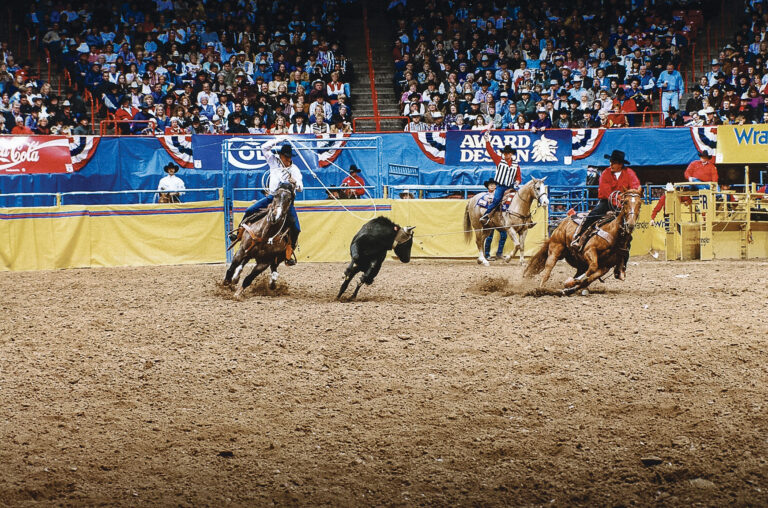The handle you put on a steer is dictated by the types of steers youre roping. Whether steers are fresh or roped out makes a big difference. There are three basic stages in the career of a roping steer, and the fresh ones are the hardest to handle. The medium ones, that have had 10 or 15 runs on them, are the easiest to handle. In the latter part of their careers, steers know all the tricks in the book, because they know whats coming. Theyre tougher to handle. As a roper, you need to read the situation so you can react and counteract what the steer does.
If you’ve roped steers before and know what they’re going to do, you can preempt their pattern and whatever tricks they have. It doesn’t matter if you’re heading or heeling. Once a steer’s been roped numerous times he has a pattern. He’s going to counteract you also, so it’s kind of like playing chess. For example, if a steer tends to go left, a header rides wide and the heeler stays back to avoid putting pressure on him on the right side, the steer will sometimes go right.
A smart steer can outfox a novice roper. If you run up on him too hard and ride too tight of position, he’ll try to cut in front of you. A novice roper can’t always see these things coming.
There are so many scenarios that can happen when steers get smart. Some steers start setting up. They’ve figured out how to get away with that and start slamming on the breaks. If you overrun a steer like that at all, he’ll put on the brakes and duck behind the header and the heeler. If you know a steer has a history of setting up or stopping, the heeler has to stay back a touch and the header might have to reach a little and not get up too close to him. If you let the head horse run up on top of him, you will stop that steer. Keep that steer out in front of you, if at all possible. Once a steer starts stopping when the neck rope pops, there isn’t much you can do.
It’s always an advantage to know your cattle. Whether you’re at a roping or rodeo, watch and pay attention so you can make a game plan for how to best get by whatever steer you draw. You always have to react and adjust as the run unfolds, but a game plan always helps you strategize.
If a steer wants to drag or get heavy, he’s almost impossible to heel. Very seldom do fresh steers drag. They’re usually roped out, and sometimes their heads are sore. Some have been roped around a half head or neck and start to choke down. If a heeler cuts the corner too much the steer will see him coming and hang back on the end of the rope. If you know a steer gets heavy, the heeler can stay out around him and ride different position. The best shot on a steer like that is usually the first or second jump. If a steer’s head is sore and that’s why he’s dragging, sometimes roping him around a half head or neck will make him hop off. The most common way to handle a dragger is sliding rope and jerking him out of the ground. To me, that’s the worst thing you can do to a heeler. He needs to hurry up and get a shot. Then, when you slide him rope, the heeler’s on top of the steer, which causes the steer to drag more and the heeler has to pull off of the steer. The two best things to try are roping a half head or a neck. Make a plan with your heeler. A header can also bend the steer’s head and let him float down the arena some instead of coming back up the arena so much. The more you come back up the arena with one, the more you hang him back on the end of the rope.
If a steer starts running up the rope and you try to stay out in front of him to keep the rope tight, he’ll be running across the arena as fast as he ran down the arena. That’s pretty tough on heelers. As a header, you have to stay ahead of him, even if there’s a slight amount of slack. Try your best to keep him in a straight line for your heeler. The heeler needs to be in double attack mode to get up there and get him roped. Don’t try to keep him on a tight rope or you’ll be going 9-0. Try to come back up the arena just a little bit, to tighten up the rope and try to keep the steer going as straight as you can. The heeler has to drive in there and get him caught. The worst thing the header can do is not stay out ahead of the steer, because then you’re in the way of the heeler and you’ll also make the steer swing to the outside. If the heeler knows a steer runs up the rope, he can cheat the corner a little, cut him off and try to make him hang back on the rope a little bit. You don’t want your heeler to be late in that situation.











